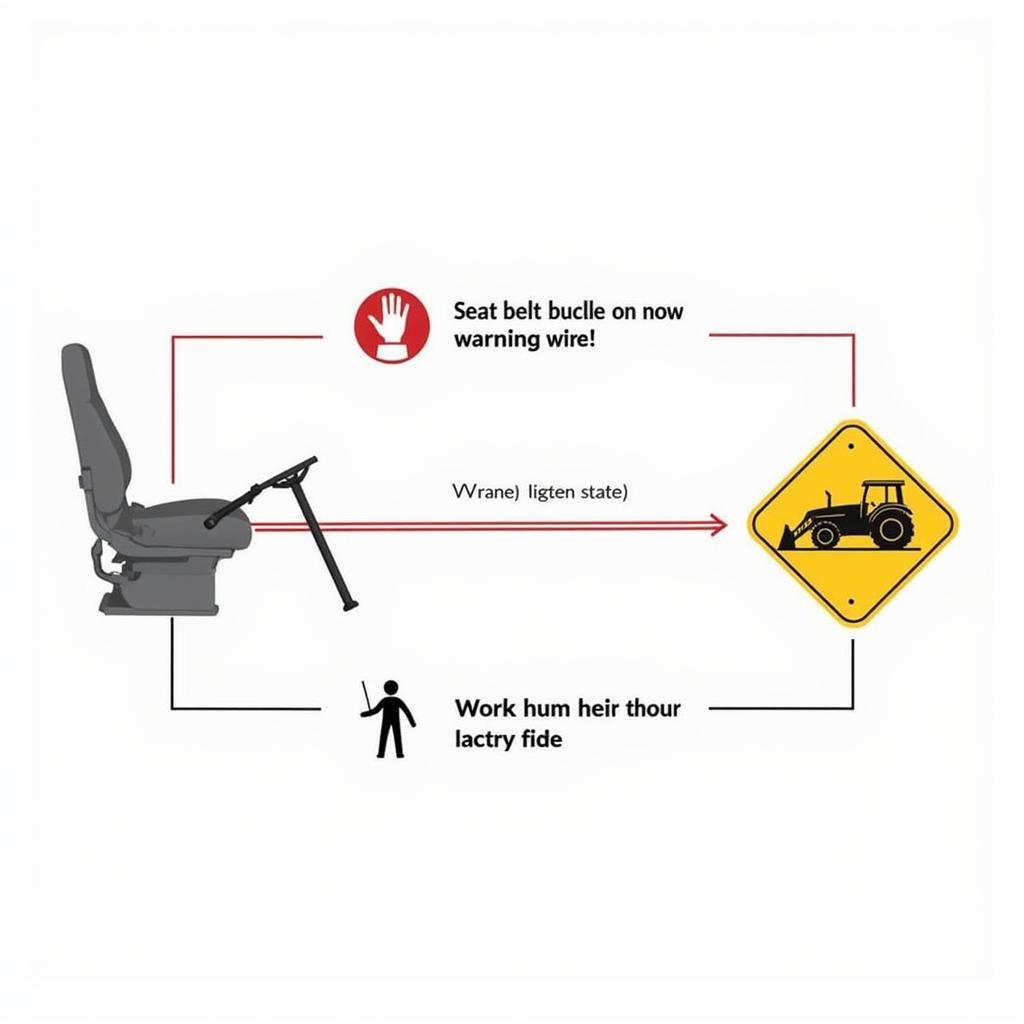Seat belts are an essential safety feature in any vehicle, and tractors are no exception. While you might not always think about them, seat belts with warning wires play a crucial role in keeping you safe while operating a tractor. They are designed to not only restrain you in case of an accident but also to alert you if the seat belt is not fastened. This article delves into the mechanics, importance, troubleshooting, and maintenance of seat belts for tractors with warning wires.
 Tractor Seat Belt Warning Light
Tractor Seat Belt Warning Light
Why Warning Wires Matter
Imagine this: you’re maneuvering your tractor on uneven terrain when you hit a bump, throwing you off balance. Without a fastened seat belt, the consequences could be dire. That’s where the warning wire system steps in. When you start the tractor, the warning system activates. If the seat belt is unbuckled, a circuit remains open, triggering a visual or audible alarm. This serves as a constant reminder to prioritize your safety.
How the System Works
The warning wire system is relatively simple. Here’s a breakdown:
- Seat Belt Buckle: Contains a switch that closes when the seat belt is fastened, completing the electrical circuit.
- Warning Wire: Connects the buckle switch to the tractor’s electrical system.
- Warning System: Typically consists of a warning light on the dashboard and/or an alarm buzzer.
 Tractor Seat Belt Buckle and Wiring Diagram
Tractor Seat Belt Buckle and Wiring Diagram
Troubleshooting Common Issues
Experiencing problems with your seat belt warning system? Here are a few common issues and how to address them:
- Constant Warning: If the alarm persists even when the seat belt is fastened, the buckle switch might be faulty and need replacement.
- No Warning: Check for a broken warning wire, a malfunctioning warning system (light or buzzer), or a blown fuse.
- Intermittent Warning: This could indicate a loose connection in the wiring. Inspect the wiring harness for any signs of damage or loose connections.
Maintenance and Safety Tips
- Regular Inspection: Make it a habit to visually inspect your seat belt and warning wire system for any signs of wear and tear, such as fraying, cuts, or loose connections.
- Cleaning: Dirt and debris can affect the buckle switch’s functionality. Clean the buckle regularly using a brush and a damp cloth.
- Avoid Modifications: Avoid making any modifications to the seat belt system or warning wire. Tampering with the system can compromise its effectiveness and void any warranties.
When to Seek Professional Help
While some issues can be resolved with basic troubleshooting, it’s crucial to consult a qualified tractor technician for:
- Complex Electrical Problems: If you suspect issues with the tractor’s electrical system beyond the seat belt warning wire, professional diagnosis is recommended.
- Seat Belt Replacement: Always rely on a trained technician for seat belt replacement to ensure proper installation and functionality.
 Tractor Technician Inspecting Seat Belt
Tractor Technician Inspecting Seat Belt
Conclusion
Seat belts for tractors with warning wires are indispensable safety features that can prevent serious injuries or even save your life. Understanding how these systems work, being proactive in troubleshooting, and seeking professional help when needed all contribute to a safer operating experience. Remember, your safety is paramount – always buckle up before operating your tractor.
